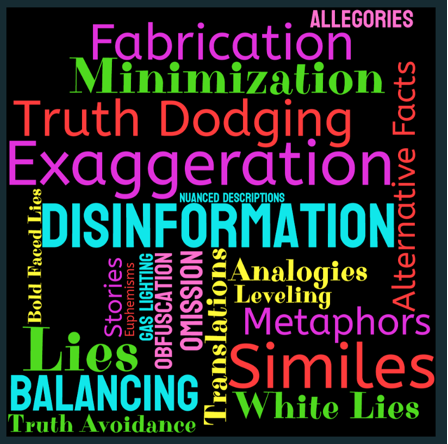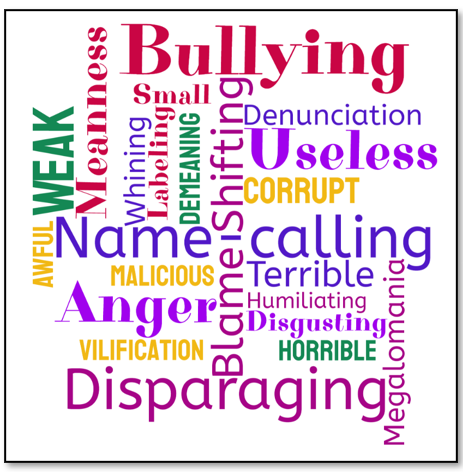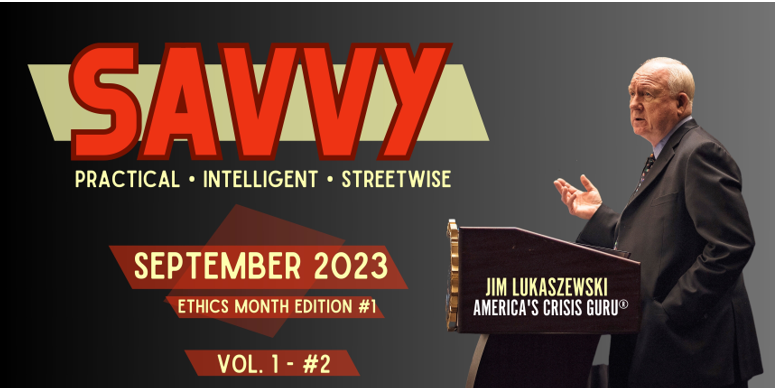Cayce Myers, Ph.D., L.L.M., J.D., APR, PRSA BEPS Member, Member PRSA National Board
By James E. Lukaszewski, ABC, Fellow IABC; APR, Fellow PRSA, PRSA BEPS Emeritus Longest serving member and former co-chair of the PRSA Board of Ethics and Professionals Standards (BEPS)
It seems that liars and bullies dominate the world’s information these days. Both use all too familiar tools and drastic language to keep their oppression intact and the truth hidden or missing. Liars have a toolkit that you’ll find surprising, even familiar. We call it The Liar’s List. These techniques are their verbal and written tools for truth avoidance.
- Allegories
- Analogies
- Balancing
- Euphemisms
- Leveling
- Lies
- Metaphors
- “Nuanced Descriptions”
- Obfuscation
- Similes
- Stores
- Translations, “in other words…”

The Liar’s List
Are you surprised? This is, of course, a list of techniques communicators in practically every culture on the planet use daily. Whether used for good or something else, the one common feature of all these tools is that truth is missing, intentionally. It’s truth avoidance, whatever the purpose, however well-intentioned. People notice, especially the victims of these techniques.
Items on the Liar’s List are never fully truthful and more often are used to avoid being direct, plain-spoken, emotionless, and clearly responsive.
Most of those seeking truth only find truth dodgers and truth avoiders. Truth seekers feel victimized.
The first casualty if you use these techniques is trust loss. Remember, trust lost is replaced with fear, anxiety, uncertainty, doubt, and anger. That’s a big price to pay for the pleasure of telling a cute story rather than the plain truth.
Victims, when confronted with these techniques, get upset because they know that what they need is being purposely avoided. The quickest way to drive victims to a lawyer’s office or seek powerful advocacy assistance is failing to recognize that victims need 5 things:
- Validation: Recognition, acknowledgment, and validation of their suffering.
- Visibility: A platform for telling their story in their own words.
- Vindication: Credit for the impact of their suffering on improving the detection, prevention, deterring, and reduction of future occurrences.
- Allocution: An admission and apology from the perpetrator or predator.
- Restoration: Sometimes recovery of damages.
Truth dodging is an insidious problem in the field of communication. For example, storytelling has become a cottage industry in the field, it has become a catchphrase in the communications profession. Stories present major problems:
- Stories are fabrications. The news story or news release has a snappy headline, a thought-provoking or catchy lead, followed by a beginning, middle, and end usually containing a conclusion, lesson, self-evident truth, or punchline. Not exactly how life actually happens.
- Stories usually contain bits of truth mixed into their fabrication batter.
- Stories feel like the truth because we are entertained, and sometimes inspired. However, stories are only partially true, therefore, also partially untrue . . . a lie.
Good communication is truthful, direct, and clear. Ethical public relations practitioners using stories and other techniques from The Liar’s List need to focus on truthful information, narratives, and conclusions. Mindful that partial truth also indicates partial falseness that needs to be revealed and explained. Your trust-ability and credibility is conferred on you by the perception of others reflecting your behaviors and deeds.

Drastic Language – The Bully’s Tools
The vocabulary of bullies is the language of desperation, greed, powerful, corrosive, malicious, and intentionally harmful. Recognize these behaviors and call them out.
Your Truth Manifesto
“To know the truth and speak of it is helpful, important, and sometimes courageous. To know the truth but equivocate or speak about anything but that truth is willfully harmful, intentionally misleading, and often unethical.” – Unattributed proverb
The Truth Manifesto is designed to help you avoid using the liar’s techniques regardless of how benevolent or helpful your motives. Or, at the very least, help you use them sparingly. The manifesto is a public declaration of your intentions, opinions, objectives, and motives. Truth always relies on simple sensible understandable words and deeds. That’s how you find the truth, often buried in all the rest.
The Truth Manifesto, is something you can easily absorb, use, and teach others.
- “When problems or opportunities occur, we’ll be prepared to talk openly about them and act quickly to respond operationally.”
- “If the public should know about an issue or problem which could affect them, we will voluntarily talk about it as quickly and as completely as we can.”
- “When problems or changes occur, we will keep the community and those affected posted regularly until the problem or changes have been thoroughly explained or resolved.”
- “We will answer any questions the community or victims may have and suggest and volunteer additional information on matters the community has yet to ask questions about.”
- “We will be cooperative with all interested news media, but our primary responsibility is to communicate directly with those most affected by our actions as soon and continuously as possible.”
- “We will respect and seek to work with our critics and those who oppose us.”
- “We will tell the truth with facts and proof, refraining from truth dodging and avoidance techniques.”
“What Is Your Truth Strategy?”
This is a significant question about your tomorrow. Successful tomorrows have truth and simplicity at their center.
Failing to have a truth strategy or using other items from The Liar’s List simply prolongs, expands, and further blocks getting to the truth. In crisis, especially, bad things get worse before they get better. Failure to seek, identify, and communicate with aggressive truthfulness is the main cause of poor outcomes and failure.
The Truth About Truth Dodging.
Words matter. Style matters. Context matters. Looking at The Liar’s List and the conventions of truth avoidance there are some simple ways to communicate truthfully, honestly, and ethically. The profile of truth, in our experience, is statements and information that are simple, sensible, positive, clearly helpful, constructive, useful, and obviously true. Write less and make it more important and truthful. Say less and make your words memorably truthful. Resist the use of techniques on The Liar’s List.
Say what you mean. Mean what you say. Fewer words often lead to more rapid understanding. Avoiding aggressive, drastic language can reduce contention, foster agreement, and even peace.

